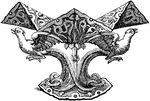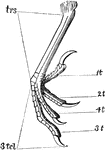
European Dipper
"Bill shorter that head, slender and compressed throughout, higher that broad at the nostrils, about…

American Dipper
"Adult, in summer: Slaty-plumbeous, paler below, inclining on the head to sooty-brown. Quills and tail-feathers…

Wheatear
Wheatear male has a bluish-gray back, black patch on ear, a white rump and sides of tail, and black…

Stone Chats
"Bill shorter than head, slender, straight, depressed at base, compressed at end, notched. Wings long,…

Eastern Blue-Bird
"in full plumage: Rich azure-blue, the ends of the wing-quills blackish; throat, breast, and sides of…
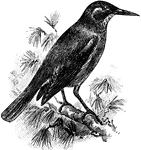
Pinyon Jay
The Pinyon Jay (Gymnorhinus cyanocephalus) is a bird in the Corvidae family of oscine passerine birds.…
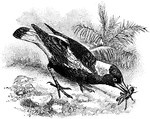
Australian Magpie
The Australian Magpie (Cracticus tibicen) is a bird in the Artamidae family of crow-like birds. It was…

Bearded Vulture
The Bearded Vulture (Gypaetus barbatus) is a large bird in the Accipitridae family of birds of prey.
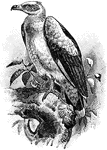
Palm-Nut Vulture
The Palm-Nut Vulture (Gypohierax angolensis) is a large bird in the Accipitridae family of birds of…
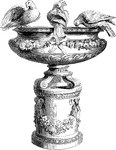
Bird Bath
This richly decorated bird bath features four sculpted birds perched along the top. The basin itself…
Fireplace Panel
A panel for a fireplace that is ornately designed. It features flowers and vines, faces and birds. The…
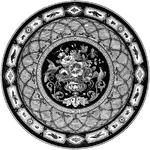
Table-Top
This table-top is made from the marble of Derbyshire, England. It also is made out of lapis lazuli a…
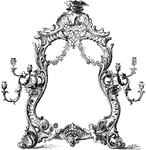
Toilet Mirror
This toilet mirror is made out of silver and includes six branches of candle holders. The style is a…

Vase
This vase is designed with birds. It is footed and has a wide body and a narrow neck that flares out…

Brooch
This brooch is designed in a Renaissance style with a figure in the center and a bird on each side.
Canopy
This canopy is made out of carved wood in a design of spikes, leaf scrolls and two birds at the base.…

Flower Stand
This flower stand has a design on its column of two birds with lowered heads. The top is richly decorated…

Reynard the Fox: Tricking the Crows
Reynard the Fox pretending to be dead so he can catch Corbaut and Sharpbeak, the crows.
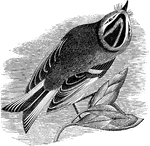
Golden Crested Kinglet
"Upper parts olive-green, more or less bright, sometimes rather olive-ashy, always brightest on the…
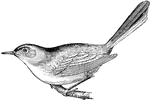
Blue-gray Gnat-catcher
"Grayish-blue, bluer on the crown, hoary on the rump, the forehead black, continuous with a black superciliary…

Black-capped Gnat-catcher
"- a, head of a (Polioptila nigriceps) Black-capped Gnat-catcher. b, head of a(Polioptila caerulea)…
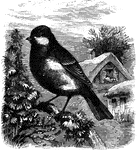
European Greater Titmouse
"Head not crested. Wings and tail rounded, of approximately equal lengths, and about as long as the…
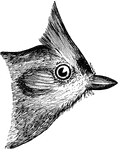
Tufted Titmouse
"Entire upper parts ashy, the back usually with a slight olivaceous shade, the wings and tail rather…
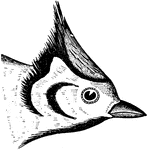
Bridled Titmouse
"Upper parts olivaceous-ash, wings and tail darker, edged with the color of the back, or even a brighter…

Scutellate Laminiplanter Tarsus of a Cat-bird
"Figure shows Scutellate laminiplanter tarsus of a cat-bird. A tarsus so disposed as to its podotheca…
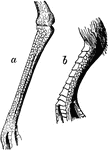
Reticulate Tarsus of a Plover
"Fig 38 a, Reticulate tarsus of a Plover. b, Scutellate and reticulate tarsus of a pigeon." Elliot Coues,…
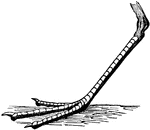
Tridactyle Foot of a Sanderling
"Fig. 39 shows a Tridactyle foot of a sanderling, Calidris arenaria." Elliot Coues, 1884
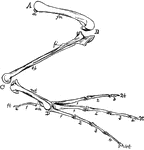
Bones of a Bird's Hind Limb
"Fig 34 - Bones of a bird's hind limb: from a duck, Clangula islandica. A, hip: B, knee: C, heel or…

Black-capped Chickadee
"Crown and nape, with chin and throat, black, separated by white sides of the head. Upper parts brownish-ash,…
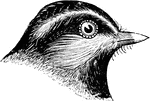
Mountain Chickadee
"Upper part ashy-gray, with scarcely a shade, and only on the rump, under parts similarly grayish-white,…

Two Least Bush-Tit Sitting on their Nest
"Dull lead-color, frequently with a brownish or olivaceous shade, the top of the head abruptly darker…
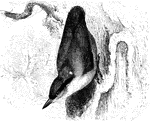
European Nuthatch
"Crown clear hair-brown; a white spot on nape; middle tail-feathers plain." Elliot Coues, 1884.
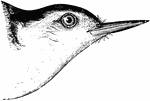
White-Breasted Nuthatch
"Upper parts, central tail-feathers, and much edging of the wings, clear ashy-blue; whole crown, nape,…

Red-breasted Nuthatch
"Upper parts leaden-blue the central tail-feathers the same; wings fuscous, with slight ashy edgings…
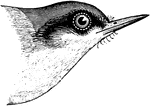
Brown-headed Nuthatch
"No black cap or white stripe on head. Upper parts dull ashy-blue; under parts sordid or muddy whitish.…

Typical Passerine Bird Feet
"Fig. Typical passerine feet. The right hand fig. is plectrophanes lapponicus." Elliot Coues, 1884

The foot of a Kingfisher
"Fig. 44- Syndactyle foot of a kingfisher. Thus a kingfisher shows what is called a syndactyle or syngnesious…

Zygodactyle Foot of a Woodpecker
"Fig. 45.- Zygodactyle foot of a woodpecker, Hylotomus pileatus. The zygodactyle or yoke-toed modification…

The Raptorial Foot of a Hawk
"Fig. 46. - Raptorial foot of a hawk, Accipiter cooperi. The raptorial is another modification of the…

The Raptorial Foot of an Owl
"Fig. 47. - Raptorial foot of an owl, The raptorial is another modification of the insessorial foot.…
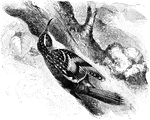
Common Brown Creeper
"Common Brown Creeper. Upper parts dark brown, changing to rusty-brown on the rump, everywhere streaked…

European Wren
"European Wren. Feet strictly laminiplanter, as usual in Oscines. Tail thin, with narrow parallel-edged…

Rock Wren
"Upper parts pale brownish-gray, minutely dotted with blackish and whitish points together, and usually…
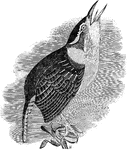
Carolina Wren
"Carolina Wren. Upper parts uniform reddish-brown, brightest on the rump, where are concealed whitish…

Winter Wren
"Winter Wren. Above brown, darker before, brighter behind, most of back, together with tail and inner…

Long-billed Marsh Wren
"Long-billed Marsh Wren. T. palustris. Above clear brown, unbarred, the middle of the back with a large…

Short-billed Marsh Wren
"Short-billed Marsh Wren. Cistothorus platensis. Upper parts brown, the crown and most of the back blackish,…

Shore Lark
"Shore Lark or Horned Lark. Upper parts in general pinkish-brown, this pinkish or vinaceous or liliaceous…
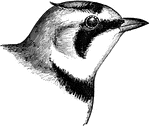
Shore Lark
"Shore Lark or Horned Lark. Upper parts in general pinkish-brown, this pinkish or vinaceous or liliaceous…

Full Page Border with Birds on Power Lines
An illustration of a full page border with birds on power lines.
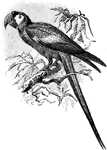
Macaw on Branch
Macaws are small to large, often colorful New World parrots. Macaws are native to Mexico, Central America,…
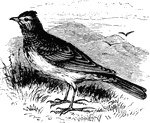
Skylark
"Sky-Lark. Upper parts grayish-brown, the feathers with darker centers; under parts whitish, tinged…
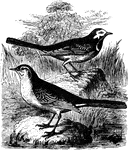
A White and Yellow Wagtail Sitting on the Rocks
A (Motacilla alba) or White Wagtail (upper) and a (Motacilla flava) Yellow Wagtail (lower) sitting on…

Yellow Wagtail Head and Foot
"The Yellow Wagtail or Motilla flava has characters of the Motacilla alva; tail shorter, not exceeding…
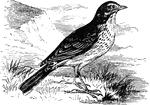
Meadow Pipit
"Meadow Pipit or Anthus pratensis. Upper parts greenish-brown distinctly marked with blackish-brown…

Black Throated Green Warbler
"Black Throated Green Warbler or Dendroica virens. Back and crown clear yellow-olive; forehead, superciliary…

